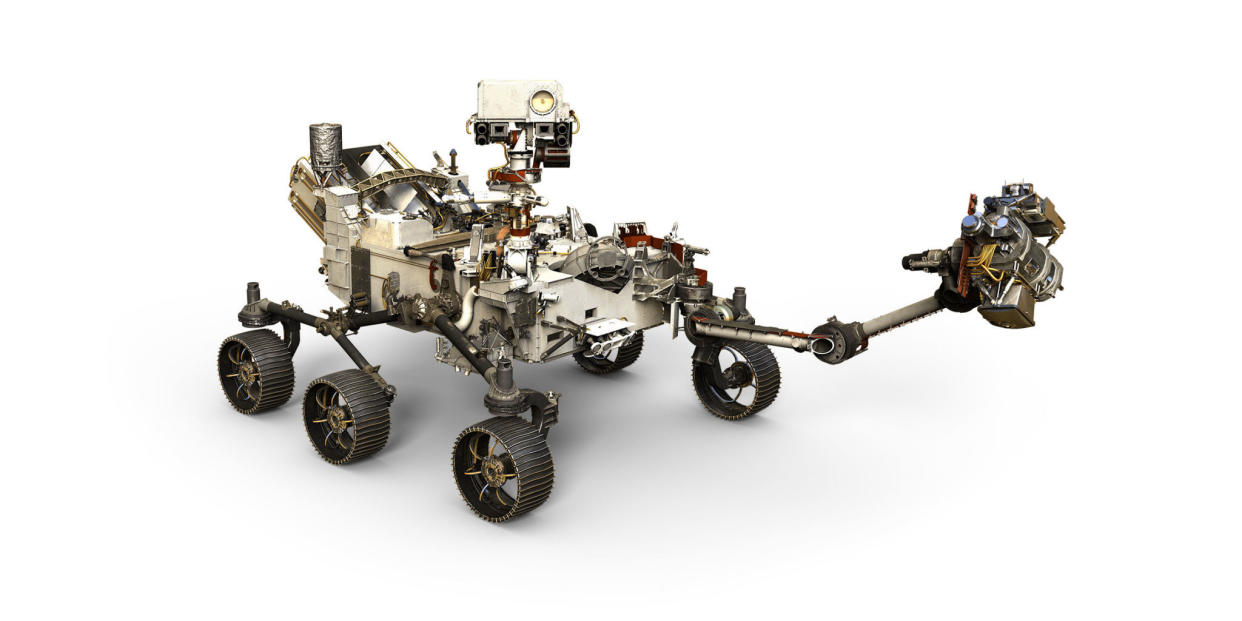New NASA Budget Cuts Earth Science and Education, Boosts Space Exploration and Human Flight

The Trump administration has released a preliminary budget report titled, "America First: A Budget Blueprint to Make America Great Again," and contained within are the new priorities for NASA in 2018. The report has NASA receiving a 0.8 percent decrease in funding from 2017, although the final budget will need to be approved by congress. The report highlights the Europa Clipper flyby mission, Mars 2020 rover, and development of the Space Launch System rocket and Orion spacecraft as priorities for NASA. The report also identifies fostering private-public partnerships in space exploration as a priority moving forward.
One space mission that got the ax is the Asteroid Redirect Mission, a proposed mission to send a spacecraft to a near-Earth asteroid to grab a multi-ton boulder with robotic arms and then deposit it in orbit around the moon for further study. Another mission to get the kibosh is the proposed Europa lander. Both of these missions were in very early stages of planning and development, but they will likely not receive funding for fiscal year 2018. There is a NASA town hall meeting to discuss the viability of the proposed Europa landed scheduled for this Sunday, March 19.
Two of the biggest proposed cuts are to the Earth Science program, which will have four missions terminated, and the NASA Office of Education, which will be eliminated outright. The four Earth science missions that are being canceled are the Plankton, Aerosol, Cloud, ocean Ecosystem (PACE) satellite the Orbiting Carbon Observatory 3 (OCO-3), the already-launched Deep Space Climate Observatory (DSCOVR), and the Climate Absolute Radiance and Refractivity Observatory (CLARREO) Pathfinder Project, which is a proposed instrument to be launched to the International Space Station to measure how much solar radiation is reflected back from the Earth's surface-an important measurement for tracking the rate of climate change. Particularly glaring is the termination of the DSCOVR satellite, jointly operated by NASA and NOAA, which has already been launched into orbit and is currently conducting scientific research.

The budget also eliminates NASA's $115 million Office of Education, arguing that "The Office of Education has experienced significant challenges in implementing a NASA-wide education strategy and is performing functions that are duplicative of other parts of the agency." It may be that the Office of Education performs similar functions to other departments, but cutting the program will surely result in fewer scholarships, internships and student programs sponsored by NASA in the future.
An interesting area of focus in the report is additional funding "for eventual over-land commercial supersonic flights and safer, more efficient air travel with a strong program of aeronautics research." NASA is working with Lockheed Martin to build a Quiet Supersonic Technology (QueSST) demonstrator aircraft to reduce the noise of sonic booms and supersonic flight. It is currently illegal for a commercial aircraft to fly at supersonic speeds over U.S. land because of the resulting noise pollution.
The report also discusses restructuring plans to build a refueling and maintenance satellite that could autonomously perform satellite repairs and refuelings in orbit. Research is currently being conducted with NASA's Raven optical instrument on the ISS to develop the necessary technology for autonomous rendezvous and repairs by the future Restore-L satellite. It is not clear how the new budget will restructure this program.
You can download and read the entire NASA budget report here, starting on page 43:
You Might Also Like

